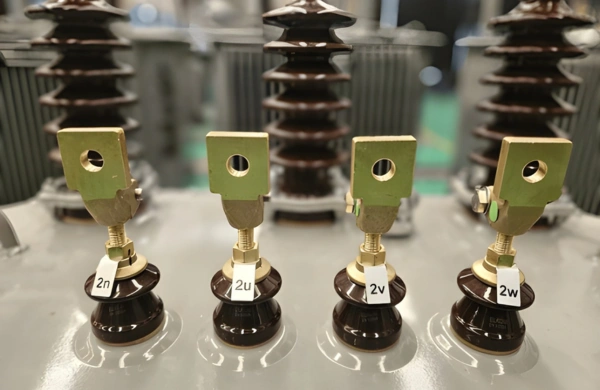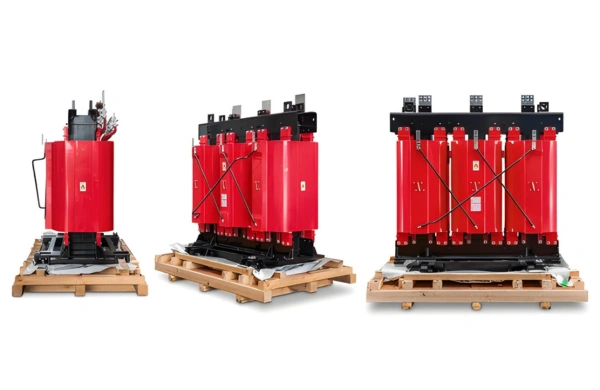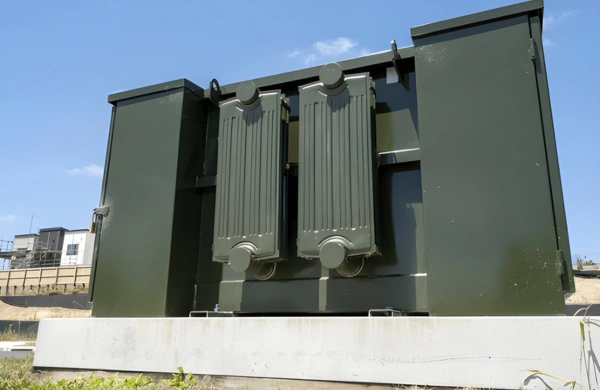Introduction
Transformer insulation is one of the most critical components ensuring reliability and safety in power networks. As the grid becomes smarter, decentralized, and more digitized, insulation systems are facing higher electrical stress, tighter space constraints, and harsher environmental conditions. Modern transformer insulators—ranging from bushings and barriers to composite materials—play a crucial role in managing these challenges while maintaining long-term performance and grid stability.
Insulators are the silent protectors of every transformer, preventing dielectric breakdowns, arcing, and power outages. Their design, material composition, and manufacturing precision directly influence transformer lifespan, efficiency, and safety.
Know About Best Transformer Insulators Supporting
Smarter Grids
This article explores the materials, functions, and evolving technologies behind transformer insulators, along with a look at the leading manufacturers driving reliability in North American grid applications—led by Zetwerk, a precision manufacturer supplying critical insulation components and assemblies for power and distribution transformers.
Importance of Insulators in Modern Transformers
In a transformer, insulation is not limited to a single part—it is an integrated system covering:
- Winding Insulation: Separates turns and layers to prevent short circuits.
- Core and Frame Insulation: Avoids contact between the energized windings and grounded components.
- Bushings and Barriers: Provide external insulation between live conductors and grounded tank structures.
- Dielectric Fluids or Solids: Manage heat dissipation and electrical stress under varying load conditions.
The goal of a transformer insulator system is to withstand electrical, mechanical, and thermal stresses while maintaining high dielectric strength and minimal degradation over decades of operation.
In modern grid applications, where transformers face high switching frequencies, transient voltages, and compact designs, insulation reliability becomes the determining factor in system uptime and longevity.
Types of Transformer Insulators
a. Porcelain Insulators
Traditional insulators made from high-strength porcelain remain common in outdoor high-voltage transformers. They offer excellent dielectric properties, mechanical rigidity, and weather resistance.
Advantages:
- Long service life (20–40 years)
- Resistant to contamination and UV degradation
- Well-suited for high-voltage bushings and terminal insulators
b. Composite or Polymer Insulators
Made of silicone rubber, epoxy resin, or fiberglass-reinforced polymer (FRP), these insulators are lighter, non-brittle, and hydrophobic—making them ideal for modern compact designs.
Advantages:
- Lighter and easier to handle
- Self-cleaning hydrophobic surface reduces flashover risk
- Higher impact resistance and flexibility
c. Epoxy-Molded Insulators
Used in low- and medium-voltage dry-type transformers and switchgear, epoxy insulators provide excellent electrical strength and dimensional stability.
Advantages:
- Customizable geometries
- Resistant to tracking and moisture absorption
- Superior performance in indoor and sealed environments
d. Pressboard and Paper Insulation
Used primarily inside oil-immersed transformers, cellulose-based insulation serves as inter-turn and inter-layer dielectric barriers.
Advantages:
- Excellent compatibility with transformer oil
- High mechanical flexibility
- Cost-effective and biodegradable
Each insulator type plays a role in ensuring dielectric reliability—from external terminals to internal winding insulation.
Materials and Dielectric Properties
The performance of transformer insulators depends on the dielectric strength and mechanical properties of their materials.
| Material | Dielectric Strength (kV/mm) | Thermal Class | Applications |
| Porcelain | 10–15 | Class B | High-voltage bushings |
| Epoxy Resin | 15–25 | Class F/H | Dry-type transformers |
| Silicone Rubber | 20–25 | Class H | Outdoor composite insulators |
| Cellulose Paper | 5–10 | Class A | Oil-immersed windings |
| FRP (Glass-Reinforced Polymer) | 18–22 | Class F | Support structures, spacers |
Modern insulator design integrates materials based on thermal class, dielectric strength, mechanical load, and environmental exposure.
Zetwerk sources and processes these materials through ISO-certified supply chains to maintain consistent quality, dielectric performance, and traceability for North American projects.
Manufacturing Process and Quality Control
Transformer insulator manufacturing demands precision in material processing, curing, and testing.
- Material Preparation:
Raw materials like porcelain clay, epoxy resin, or composite polymers are formulated for specific dielectric and thermal performance. - Molding and Forming:
- Porcelain: Slip-cast or isostatically pressed, then kiln-fired at 1200–1300°C.
- Epoxy: Pressure-cast or vacuum-cast in molds to avoid voids and defects.
- Polymer: Pultrusion or injection molding for consistent surface quality.
- Curing and Machining:
Post-cure heating ensures dimensional stability. Insulators are machined to achieve precision interfaces and uniform thickness. - Testing and Quality Validation:
- Power Frequency Withstand Test
- Impulse Voltage Test
- Partial Discharge Measurement
- Tracking and Erosion Test
- Mechanical Tensile Test
- Surface Treatment and Coating:
For outdoor applications, hydrophobic coatings and UV stabilizers are applied to enhance longevity.
Zetwerk employs digital inspection systems and automated curing ovens to maintain repeatable quality, meeting IEC 60137, IEEE C57.19, and ANSI C29 standards.
Role of Insulators in Smart Grid Reliability
The modernization of North American grids introduces new electrical challenges—variable frequency drives, distributed generation, and fluctuating load profiles all increase voltage stress on transformers.
Insulators support smart grid resilience by:
- Enhancing Dielectric Safety: Prevent flashovers during voltage transients.
- Enabling Compact Designs: High-performance materials allow smaller, lighter transformers for urban installations.
- Improving Efficiency: Low-loss insulators reduce partial discharge activity, maintaining high insulation resistance.
- Supporting Digital Monitoring: New composite materials integrate sensors to track temperature, leakage current, and mechanical strain.
Zetwerk designs and supplies insulation assemblies compatible with digital monitoring and predictive maintenance systems—supporting utilities and OEMs in deploying smarter, more self-aware transformers.
Key Testing Standards and Certifications
Transformer insulators are governed by international and regional standards that define safety, reliability, and environmental performance.
- IEC 60137: Bushings for alternating voltages above 1 kV.
- IEEE C57.19: Test procedures for transformer bushings and external insulation.
- IEC 60815: Selection and dimensioning of outdoor insulators for polluted conditions.
- ASTM D149: Dielectric breakdown voltage of solid insulating materials.
- ANSI C29 Series: Design and performance of insulators for electrical systems.
Zetwerk’s insulation components are manufactured and validated under these frameworks to ensure compatibility with North American grid equipment and utility specifications.
Leading Transformer Insulator Manufacturers
1. Zetwerk Manufacturing USA
Zetwerk produces precision-engineered insulation components for power and distribution transformers, including bushings, spacers, epoxy-molded barriers, and fiber-reinforced supports. With in-house material processing, molding, and machining capabilities, Zetwerk ensures consistent dielectric performance, UL compliance, and on-time delivery for OEM and utility projects.
2. LAPP Insulators
Known for high-voltage porcelain and polymer insulators used in substations and power transmission networks.
3. ABB Power Components
Manufactures advanced composite bushings and polymeric insulators for HV and EHV transformers worldwide.
4. PPC Insulators
Provides ceramic insulators for distribution transformers, designed for high mechanical strength and pollution resistance.
5. GE Grid Solutions
Develops hybrid and composite insulators integrated with digital sensors for real-time monitoring and predictive maintenance.
Innovations in Transformer Insulation Technology
Emerging technologies are reshaping the future of insulation systems in transformers:
- Nanocomposite Epoxy Materials: Improved dielectric and mechanical strength for compact dry-type designs.
- Hydrophobic Silicone Surfaces: Prevent moisture tracking and reduce flashover risks in outdoor transformers.
- Embedded Smart Sensors: Monitor temperature and partial discharge activity in real time.
- Recyclable Bio-Insulation Materials: Reduce carbon footprint and support sustainability goals.
- 3D-Printed Insulation Components: Enable rapid prototyping and precision geometries for next-generation compact transformers.
Zetwerk actively integrates these materials and methods in its supply chain—helping North American utilities and OEMs meet energy efficiency, sustainability, and grid modernization targets.
Conclusion
Transformer insulators are more than passive components—they are the foundation of electrical reliability, safety, and long-term grid performance. As smart grids continue to expand, transformers must operate efficiently under increased electrical stress and environmental exposure.
Zetwerk supports this evolution by delivering precision-engineered insulation components built from high-performance polymers, ceramics, and composites. Through integrated manufacturing, automated testing, and rigorous quality assurance, Zetwerk transformers meets the highest North American standards for dielectric safety and durability.
With Zetwerk, OEMs and utilities gain a trusted partner in building the next generation of efficient, resilient, and smarter transformer systems.




FAQs
a. They prevent electrical leakage and dielectric breakdown between energized and grounded parts, ensuring safe and stable transformer operation.
a. Porcelain, epoxy resin, FRP, silicone rubber, and cellulose paper are most widely used.
a. Advanced composites and hydrophobic materials reduce surface discharge and extend operating life in polluted or humid conditions.
a. Yes, Zetwerk components meet UL, IEC, IEEE, and ANSI standards for transformer insulation systems.
a. Zetwerk offers customized designs, materials, and mounting options based on voltage class, geometry, and environmental requirements.







